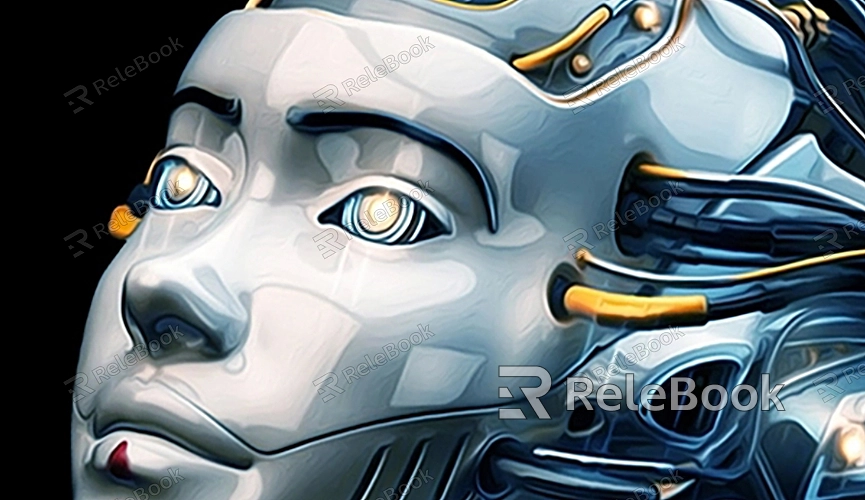How to Make a 3D Texture in Maya
Whether you're working on game development, animation, architectural visualization, or virtual reality, texture creation is an essential aspect of 3D design. Textures are more than just surface decoration; they play a crucial role in enhancing the realism and detail of your models. With Maya, a powerful 3D modeling software, you can create complex textures efficiently, elevating the visual quality of your work. In this article, I'll share my experience in using Maya to create 3D textures, guiding you through both basic and advanced techniques to improve your workflow and results.

1. Preparing: Choosing the Right Texture Tools
When making 3D textures in Maya, the first step is selecting the appropriate tools. Different tools provide varying functionalities and effects, and using the right one can make a huge difference in your workflow. Below are a few tools I commonly use:
Maya's Built-in 3D Paint Tool: Maya includes a texture painting tool that allows you to paint directly on your 3D model. This is great for basic texture work and quick detailing.
Substance Painter: For high-precision textures, Substance Painter is an excellent choice. It allows you to paint directly on 3D models and provides a rich library of materials and effects.
Photoshop: For fine-tuning 2D textures, Photoshop is indispensable. You can edit and process textures in Photoshop, adjusting colors and adding details before importing them back into Maya.
By choosing the right tools for your specific needs, you can create textures more efficiently, especially for complex scenes. The right tool ensures your textures look more natural and realistic.
2. UV Unwrapping: The Foundation for Textures
UV unwrapping is the essential first step when creating textures in Maya. Without a proper UV map, your textures won’t map correctly to the surface of your 3D model. Here’s how to get it right:
Unwrap UVs: Start by flattening the 3D surface of your model into a 2D layout. This process provides clear coordinates for texture mapping. Use Maya’s UV mapping tools to ensure each face of the model is unwrapped properly.
Optimize UV Layout: After unwrapping, the UVs may overlap or be poorly organized. By adjusting the UV layout, you can prevent texture stretching and ensure a smooth transition across the model's surface.
Check for Gaps and Overlaps: Pay special attention to gaps in the UVs, as any small opening can cause the texture to misalign or display unnaturally. Always review and fix these issues during the unwrapping process.
Proper UV unwrapping and optimization are crucial for ensuring that your textures apply accurately and seamlessly to your 3D model.
3. Texture Painting: From Basics to Detail
Once your UV map is ready, you can start painting your textures. In Maya, you can use the 3D Paint Tool to paint directly onto your model. Here are some tips for this stage:
Base Texture Painting: Start by applying basic colors and material types to your model. For example, you can paint a basic brown texture for wood or a gray texture for stone.
Detailing: Use different brushes and strokes to add finer details. For wood, you might want to include the rings of growth; for stone, you could add cracks and wear patterns.
Layered Painting: I prefer to use a layered approach when painting textures, with each layer representing a different material or detail. This method allows for easier adjustments to individual elements without affecting the entire texture.
Maya’s real-time preview function helps you monitor the texture as you work, ensuring it naturally conforms to your model’s surface.

4. Fine-tuning Texture Details
After the initial painting, it’s time to fine-tune the texture to enhance its realism. Here are some techniques I use:
Color Adjustments: Adjusting the texture's color, saturation, and contrast can help make it more reflective of real-world lighting and reflection effects. For instance, you can tweak the reflection intensity on a metal surface or enhance color variation on wood.
Adding Imperfections: Real-world textures are rarely perfect. Small imperfections like cracks, dirt, and wear can greatly enhance the realism of your texture.
Specularity and Reflection: For reflective materials such as metals or glass, adjusting the specularity and reflection properties will make them look more natural in renders. Use Maya's material editor to refine the surface properties for better reflection effects.
These fine adjustments make your textures more dynamic and lifelike, adding depth and realism to your 3D models.
5. Rendering and Optimization: Elevating the Final Output
Once your textures are complete, adjusting the render settings is equally important. Optimizing texture rendering can result in sharper, more detailed final images:
Texture Resolution: Depending on the project’s requirements, adjust the resolution of your textures. While higher resolution textures offer more detail, they also increase render times. Balance the level of detail with efficiency.
Texture Compression: For larger projects or scenes, texture compression can significantly reduce memory usage and improve render speeds.
Lighting and Shadows: Adjusting the lighting and shadow effects during rendering can improve the depth and dimensionality of the textures, ensuring they blend naturally with the environment.
By implementing these optimization techniques, you can achieve high-quality textures with improved render efficiency.
Creating 3D textures involves several steps, from selecting the right tools and unwrapping UVs to painting, fine-tuning details, and optimizing render settings. Each stage plays a critical role in achieving the best result.
If you're looking for high-quality textures or 3D model resources to enhance your project, Relebook offers a wide selection of premium assets that can boost your workflow and project quality. Visit Relebook today and find more inspiration for your creative endeavors!

